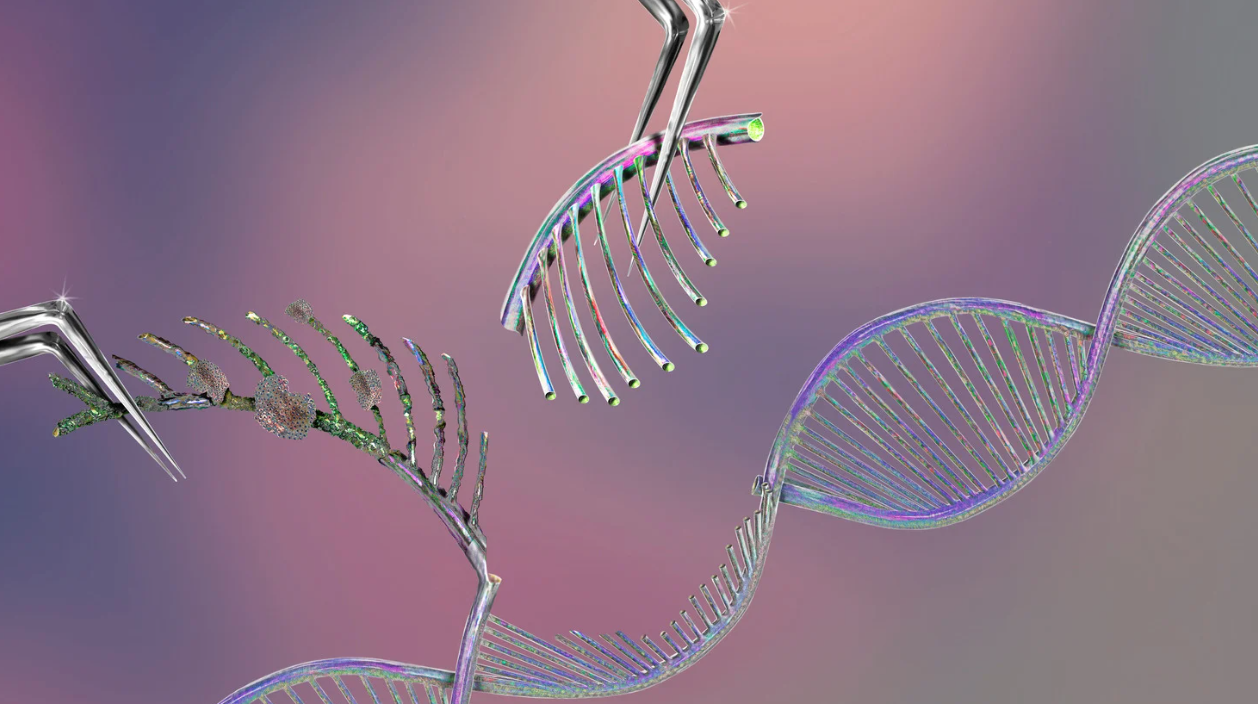Gene editing is definitely one of the most innovative breakthroughs in biotechnology. It opens up amazing possibilities for tweaking genetic material in almost any type of organism, including plants, animals, and even humans someday.
What makes this research so effective are the controlled methods scientists use, which allow them to make precise changes to DNA sequences. As we know more about how genomes operate, gene editing may have a profound impact on areas such as farming, healthcare, and environmental protection.
This would allow us to address big issues such as genetic diseases and food shortages. Throughout this blog, we will focus on the advancements of CRISPR technology and its different applications, offering readers an overview of the latest developments in gene editing.
Understanding the technology of gene editing
Science has come up with innovative ways to change DNA in living organisms through gene editing. There are quite a few popular methods out there to get this done, including:
- CRISPR-Cas9
Cas9, guided by RNA, focuses on specific DNA sequences, making double-strand breaks that can be repaired to introduce desired genetic alterations.
●Zinc Finger Nucleases (ZFNs)
This nuclease was one of the first engineered nucleases used for gene editing, utilizing zinc finger proteins to bind and cleave specific DNA sequences.
- Transcription Activator-Like Effector Nucleases (TALENs)
A TALEN consists of a DNA-binding protein that targets specific sequences for editing, similar to ZFNs.
While ZFNs and TALENs were important in the early development of gene editing, CRISPR-Cas9 has become more popular due to its simplicity, efficiency, and versatility.
A recent advancement in CRISPR technology
●A multi-target editing system
In recent years, advances in CRISPR technology have enabled researchers to edit multiple genes simultaneously. This is done mostly through the use of two Cas proteins, Cas9 and Cas12a, both of which can simultaneously target multiple genomic sites in a single experiment when co-expressed with one another. Such progress is extremely important, as it enhances our understanding of complex diseases and the complex interplay between genes.
●Base Editing
In the field of gene editing, base editing is an innovative development. In this technique, you can convert one DNA base into another without causing a double-strand break (DSB). Thus, it reduces the risk of unexpected changes and non-target effects associated with traditional CRISPR. A major benefit of base editing is that it has been shown to be effective in correcting genetic disorders, such as sickle cell anemia and beta-thalassemia, with promising results in ongoing research.
●Prime Editing
Prime editing, commonly known as “the search-and-replace” method, represents a novel approach to genetic modification. This approach achieves precise DNA sequence alterations by combining a modified Cas9 protein and pegRNA. It exceeds the capabilities of standard base editing. Prime editing is highly effective in correcting genetic mutations. It allows for the insertion or deletion of up to 80 base pairs with great accuracy.
The applications of gene editing
●Agribusiness
Through the use of gene editing, farmers have been able to develop crops that are more resistant to pests and weather. The CRISPR/Cas9 technology has enabled scientists to develop drought-resistant types of important crops like rice and wheat.These innovations not only help ensure a steady food supply in tough conditions but also reduce the need for chemical pesticides, thus increasing the environmental friendliness of agriculture.
●Medicine
The possibility of gene editing in medicine holds a great deal of promise, particularly in the treatment of genetic disorders. In clinical trials, researchers are considering the use of CRISPR to treat conditions such as cystic fibrosis, muscular dystrophy, and some cancer. It will be much more effective for patients if we are able to repair genetic defects directly at the source.
●Biotechnology
In the biotechnology sector, gene editing plays a crucial role in various applications, such as biofuels and pharmaceuticals. Scientists are using CRISPR to improve enzyme pathways in microorganisms, boosting their efficiency in producing valuable compounds. The advancement not only streamlines production processes but also contributes to the development of sustainable practices.
●Ethical Considerations
The advancement of gene editing technology has raised significant ethical concerns. Genetic editing, which involves altering genes that can be passed on to future generations, raises serious concerns regarding its long-term effects and societal implications. As we discuss “designer babies,” where genetic characteristics may be selected or enhanced, robust ethical frameworks are required.
Regulatory Frameworks
It is really important to keep gene editing technologies under review to make sure they are safe and ethical. Different countries have their own rules about using gene editing in medicine and research. In the U.S., for example, the FDA watches over human gene therapy trials that use genome editing tools like CRISPR. On a more general level, groups like the World Health Organization are working on guidelines to tackle safety issues and encourage good research.
Future Directions
Gene editing has a promising future, but it is pretty complicated. Researchers are working on new techniques to make them more precise and minimize the risks of unintended effects. As we find out more about gene editing, it could lead to major advancements not just in medicine but also in conserving the environment and promoting sustainable farming.
End!
The latest technological advances in gene editing are bringing about huge changes in many fields, blending science and technology to create exciting new possibilities. Although CRISPR-Cas9 still dominates the field of gene editing, new methods, such as base and prime editing, are improving the game by enabling extremely precise genetic modifications.Since this field is experiencing rapid growth, it is crucial that we keep the ethical aspect of things in mind while making the most of it.
Gene editing is really leading the way in biotech, giving us a different perspective on genetics and helping tackle some of the biggest challenges we face.



